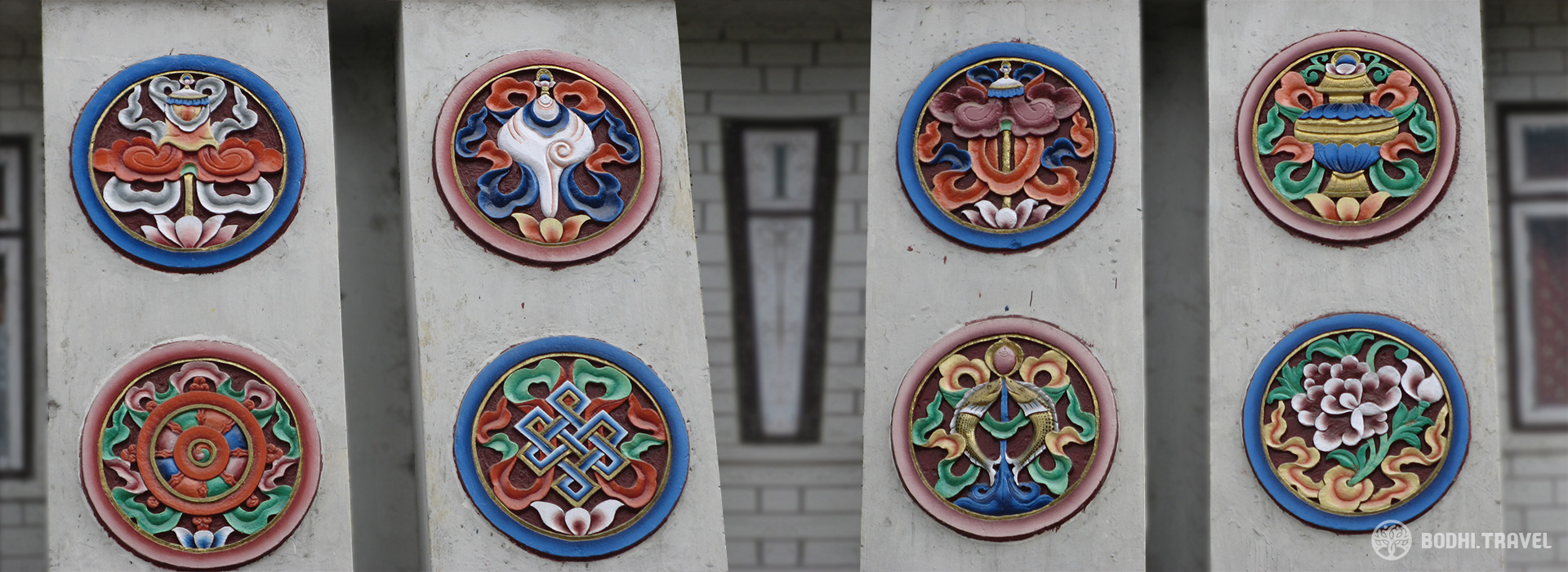
The Eight Auspicious Symbols
BODHI ADMIN - Posted on February 28, 2019 - 4,896 Views
The Eight Auspicious symbols are synonymous with Buddhism and can be found throughout Sikkim on buildings, paintings, banners and souvenirs. The symbols are mentioned in Buddhist sutras to figuratively describe the virtuous characteristics of the Buddha and His excellent qualities.
Below are the Eight Symbols and some explanations.
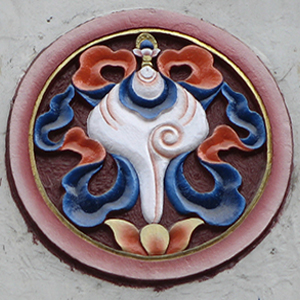
Conch - the white conch is a symbol of the beautiful, deep, melodious, interpenetrating and pervasive sound of Buddhist Teachings. When sounded, the conch will reach out far and wide to alert everyone to wake up and learn Buddhism.
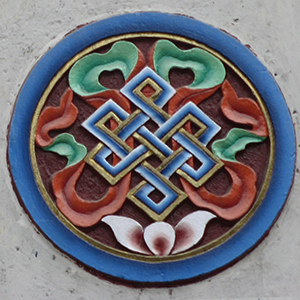
Infinity Knot - the infinity knot is an auspicious symbol of the ultimate unity of everything. It can also represent the eternal union of wisdom and compassion - two qualities essential to Enlightenment.

Fish - the two golden fish represents freedom and happiness. The freedom and happiness stems from the knowledge of the Dharma and it giving all sentient beings fearlessness in moving through samsara.

Lotus - The lotus is an important symbol of purity in Buddhism. The lotus blossoms amongst its muddy surroundings, symbolising the ability of everyone is gaining Enlightenment amidst samsara.
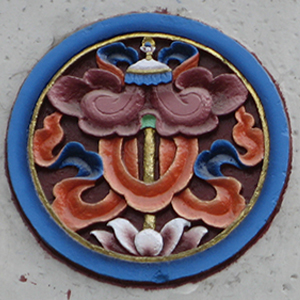
Parasol - The jewelled parasol is like a huge umbrella protecting all sentient beings from harmful forces.

Vase - The treasure vase symbolises the unending value of the Teachings of the Buddha. No matter how many persons learnt the Dharma, the treasure is never lessened.
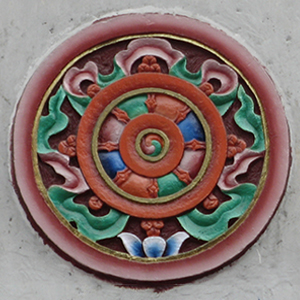
Dharmachakra - The wheel of law represents the Teachings of the Buddha and is a very common Buddhist symbol. The Buddha’s first sermon conducted at Sarnath is termed Turning of the Wheel of Dharma; the wheel symbolises the eternal sharing of His Teachings.
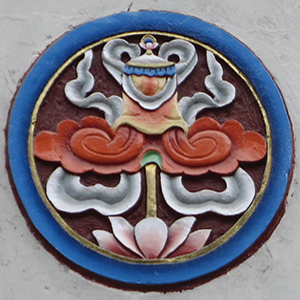
Victory Banner - The symbol of the victory banner is a representation of the Buddha's victory over the four māras, or hindrances in the path of Enlightenment.
MORE ARTICLES: Kinnara - Mythical Celestial Creature
MORE ARTICLES: Mudras – Bhumisparsha




